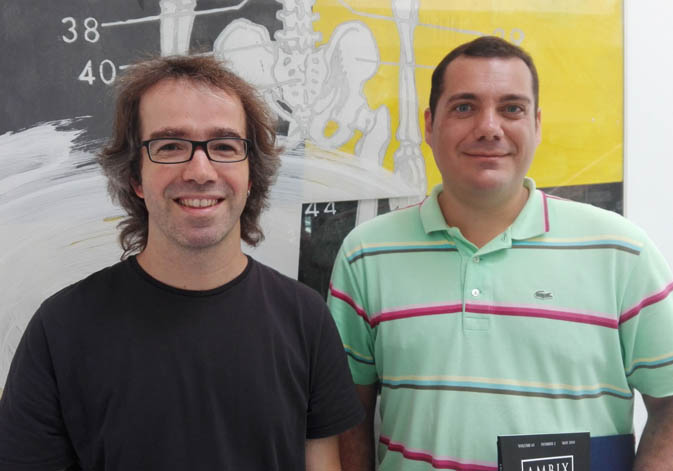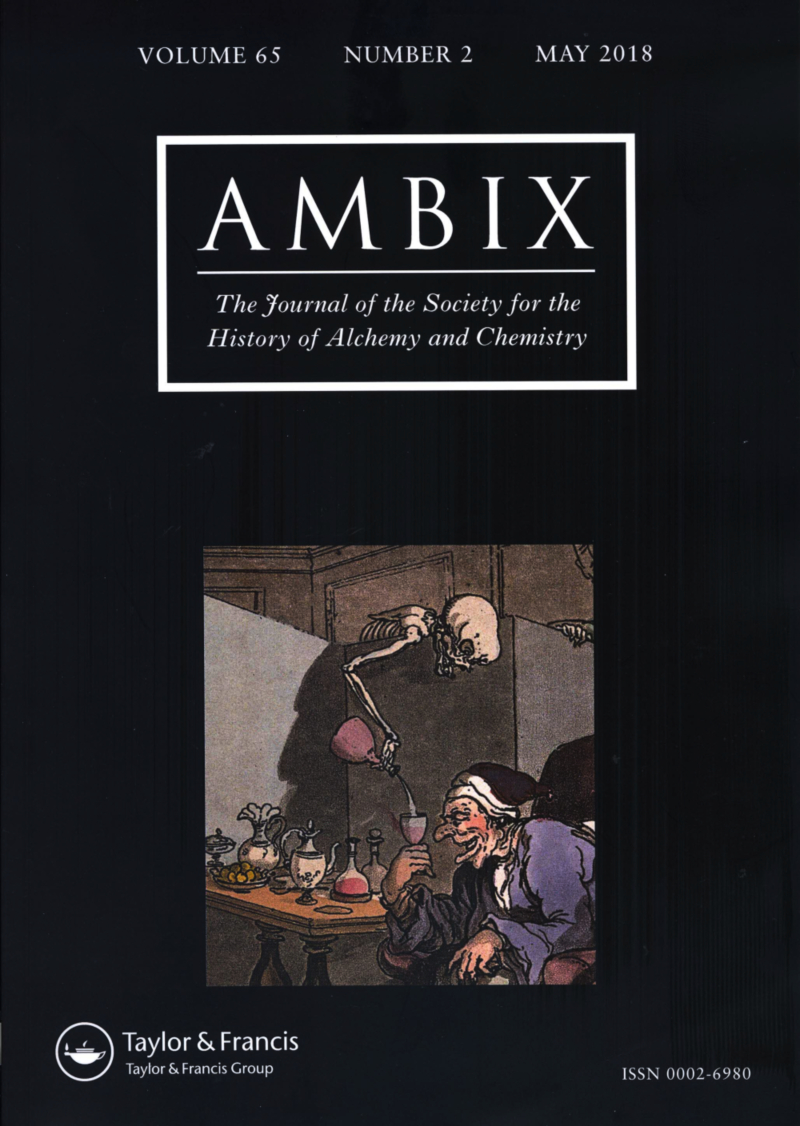Investigation of scientific resources used in 1930 to clarify a poisoning of wine with arsenic in an export from Valencia to France
- Scientific Culture and Innovation Unit
- July 27th, 2018

Ximo Guillem-Llobat, researcher from the Inter-university Institute of López Piñero in the Universitat de València, and Igancio Suay-Matallana, from the Miguel Hernández University of Elche, have studied the problems arising from sending wine poisoned with arsenic to France from Valencia’s port in 1932. 300 French sailors were poisoned. The article, published in the prestigious ‘Ambix’ journal and edited by the Society for the History of Alchemy and Chemistry, considers the relationship between the Valencian scientific world and its experts and the regulation of food trading in that moment, when the French wine market competed strongly with the Spanish one.
“Scientific discussions and regulation of different products are linked to social context, commercial pressure, patriotic demands, political negotiations as well as particular interests of experts. Studying controversies such as the poisoning in 1932 allows us observe with clarity how the elements and the expert consulting limitations are conjugated” Ximo Guillem-Llobat pointed out, professor of the Department of History of Science and Documentation in the Universitat de València.
Wine was a key product for local exports and Spain’s custom taxes, and poisoning the wine attracted enormous attention in press, authorities and the then current Valencian scientists, since French winegrowers tried to made the case more significant to discredit the Spanish wines and increase their own sales.
In fact, the chemists from the laboratory in the Valencia’s customs house, the local agricultural engineers, and other Valencian winemakers and experts played a fundamental role and went beyond technical reports and chemical analysis, making endeavours to publically defend their job in daily press and other publications.
The article «Poisoned Wine: Regulation, Chemical Analyses, and Spanish-French Trade in the 1930s» also points out the role of new regulations and wine standards at international level negotiated at that time in order to standardise the analysis methods of this product and enable the international transactions of it.
Guillem and Suay have studied the local experts’ involvement in those international negotiations, in which discussions about chemistry and analytical limits were blended with economics and trade, and beneficial regulations for both countries’ wine interests were negotiated. These facts gave rise to some regulations that excluded wine controls and poison analysis such as arsenic, although there were many potential focuses of this poison in wine making.
The article also considers the involvement of some investigate judges and doctors in Le Havre hospital, some agricultural engineers, chemists from the customs house, winemakers and some Valencian Medicine students as well as journalists from some foreign countries. Furthermore, the investigation highlights that chemistry became a vital tool in the control of goods, a result of which was the opening of laboratories at the customs houses during the 1920s.
Products coming from international trade, especially fabrics, sugar, alcohol, and wine were analysed in these laboratories. There were labs in port cities such as Barcelona, Valencia, Malaga, Portbou, Irun, Seville and Bilbao, and wine control was very important, since between 1925 and 1930 wine was the second most exported product, being oranges the first one.
The poisoning of wine with arsenic
In early April in 1932, The New York Times was the first newspaper that reported the poisoning with arsenic, from which 300 French sailors and officer that had drunk wine bought in Spain were affected, according to the newspaper. Some French and Spanish newspapers –for example, L’Express du Midi, the Nouvelliste Valaisan, La correspondencia de Valencia or El Luchador– then published the affair. There was a debate on guessing the way arsenic had blended with wine, knowing if this fact had been taken place in Valencia, or if it had happened under the responsibility of the French company in charge of the shipment. Furthermore, both French and Spanish governments, winemakers’ associations from both countries, and many experts took part in the debate.
Documentation
In order to prepare the article, Ximo Guillem-Llobat and Ignacio Suay-Matallana have consulted many French and Spanish archival documents as well as historical monographs and daily press from that moment publish in different countries. Discussions of this research at international conferences have been also crucial. Among the conferences, there is the Third International Conference on Food History and Cultures (Tours, June 2017) or the session “Wine Quality in the 19th and 20th Centuries”, organised by authors in the conference Old and New Worlds: the Global Challenges of Rural History (Lisboa, January 2016).
The research and the resulting article have been made thanks to the public research projects Políticas de Salud en la Europa del siglo XX [HAR2014-51859-C2-1-P] and Vivir en un mundo tóxico: expertos, regulaciones y controversias públicas en la España del siglo XX [HAR2015-66364-C2-2-P], and also thanks to the New Scholars Award from the Society for the History of Alchemy and Chemistry that was given to Ignacio Suay-Matallana.
Track record
Ignacio Suay-Matallana is a tenure-track 1 lecturer of History of Science in the Miguel Hernández University of Elche and also secretary of the EuCheMS Working Party on History of Chemistry. His principal research interests are related to contemporary history of science and chemistry, especially in the areas of science, material culture, textbooks, experts’ study and regulation.
Ximo Guillem-Llobat is a History of Science tenured university lecturer in the Universitat de València, the director of a master’s degree in History of Science and Scientific Communication at the Universitat de València, and a researcher in the Inter-university Institute of López Piñero. His research interests are approximations to food systems’ history, especially in food security control during the 19th and 20th centuries. He is now working in the control of environmental poisons (fumes, pest-control substance, etc.).
Article:
Ignacio Suay-Matallana & Ximo Guillem-Llobat (2018). «Poisoned Wine: Regulation, Chemical Analyses, and Spanish-French Trade in the 1930s», Ambix, 65:2, 99-121. DOI: 10.1080/00026980.2018.1452838
Link:
https://www.tandfonline.com/doi/abs/10.1080/00026980.2018.1452838



















